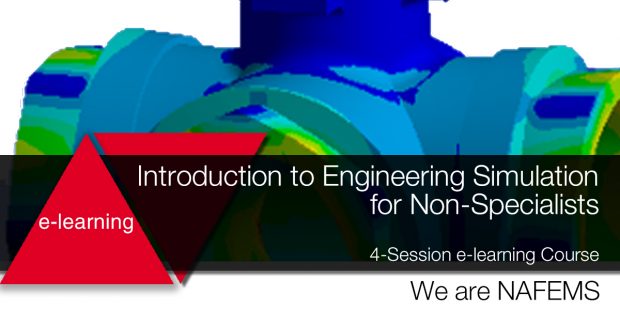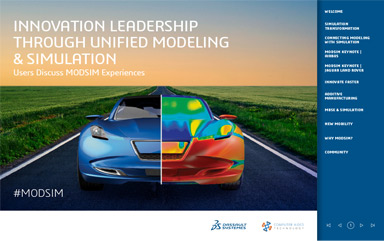Latest News
August 23, 2018
Maybe design, project or test engineering is your gig. Whatever. You're good at it. Still, you feel as uneasy as a kayaker hurtling toward rapids without a paddle. That upfront engineering simulation stuff is fast encroaching on your job, and you're feeling adrift. What do you do now?
Start by hitting today's Check it Out link. It takes you to a landing page with full details on a fast-approaching live online training course series from NAFEMS called “Introduction to Engineering Simulation for Non-Specialists.” Described by NAFEMS as “the intro before the intro,” this training series sounds extremely valuable for people and outfits uncertain as to how to implement and/or optimize analysis-driven design workflows.
 The online training course “Introduction to Engineering Simulation for Non-Specialists” aims to help engineers and their organizations understand what up-front engineering simulation is and how to optimize analysis-driven design workflows. Image courtesy of NAFEMS Ltd.
The online training course “Introduction to Engineering Simulation for Non-Specialists” aims to help engineers and their organizations understand what up-front engineering simulation is and how to optimize analysis-driven design workflows. Image courtesy of NAFEMS Ltd.Aside: NAFEMS, the nonprofit international association for the engineering modeling, analysis and simulation community, and DE co-hosted the Conference on Advancing Analysis & Simulation in Engineering (CAASE) in June 2018. This is unrelated.
The series comprises four 2-hour sessions across four weeks. It answers your “what” questions: What is upfront engineering simulation? What's the benefit? What do I need to know before I get into, say, a structural simulation? What's the workflow? What about validating results?
The series will provide explanations, instructions and exercises in such areas as stress analysis problems, geometry preparation, meshing and post-processing. All class notes will be downloadable, and session rebroadcasts will be available for streaming as soon as practical. Course materials are code-independent, so anticipate details, not marketing.
The first session provides an overview of simulation, including its varieties and challenges. Structural analyses get some extra attention. The second class gets down to the fundamentals. Here, you'll learn about parameters as applied to simulations, sources of material properties and the like.
Session three gets into simulation procedures and pre-processing, so expect to learn about preparing and setting up models and meshes. The final session covers solvers, post-processing and validation. Here, you should gather insights on sources of errors and leave with a better understanding of verification and validation methods.
NAFEMS has focused on the practical application of engineering simulation techniques since 1983. That is, they know their stuff. They know how to explain what specialists and non-specialists need to know to make simulation work optimally.
Hit the link to learn more about the “Introduction to Engineering Simulation for Non-Specialists” training course series. It sounds like a wise investment to make before you're up a creek without a paddle.
Thanks, Pal. – Lockwood
Anthony J. Lockwood, Editor at Large, DE
More NAFEMS Coverage
Subscribe to our FREE magazine, FREE email newsletters or both!
Latest News
About the Author
Anthony J. Lockwood is Digital Engineering’s founding editor. He is now retired. Contact him via [email protected].
Follow DERelated Topics








